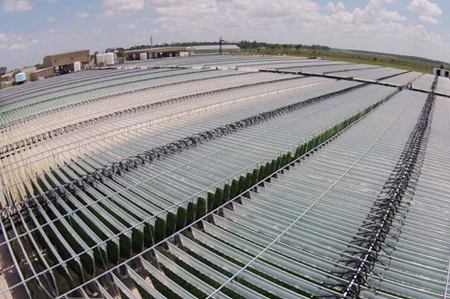Advertisement
Grab your lab coat. Let's get started
Welcome!
Welcome!
Create an account below to get 6 C&EN articles per month, receive newsletters and more - all free.
It seems this is your first time logging in online. Please enter the following information to continue.
As an ACS member you automatically get access to this site. All we need is few more details to create your reading experience.
Not you? Sign in with a different account.
Not you? Sign in with a different account.
ERROR 1
ERROR 1
ERROR 2
ERROR 2
ERROR 2
ERROR 2
ERROR 2
Password and Confirm password must match.
If you have an ACS member number, please enter it here so we can link this account to your membership. (optional)
ERROR 2
ACS values your privacy. By submitting your information, you are gaining access to C&EN and subscribing to our weekly newsletter. We use the information you provide to make your reading experience better, and we will never sell your data to third party members.
Green Chemistry
2015 Presidential Green Chemistry Challenge Awards
Honors: Annual awards recognize chemical innovations that prevent pollution and promote sustainability
by Stephen K. Ritter
July 13, 2015
Chemical plants are often vilified for pumping out toxic pollutants from their smokestacks and discharging tainted water from pipes. Environmental laws have gone a long way to curb those problems, but as an added incentive, the Environmental Protection Agency in collaboration with the White House began the Presidential Green Chemistry Challenge Awards in 1996.
This year’s awards were presented on July 13 in a ceremony held at EPA headquarters in Washington, D.C.
As the name suggests, the awards program challenges chemical companies to do better and recognizes their successes for developing innovative technologies with demonstrable human health and environmental benefits. These benefits include reducing toxicity of chemical products, reducing the use or generation of hazardous substances, introducing a renewable feedstock, saving water or energy, and reducing waste even if it’s not hazardous.
Among this year’s winners, LanzaTech took home the Greener Synthetic Pathways Award for developing a microbial fermentation process to convert carbon monoxide and carbon dioxide from steel mill and other industrial waste gas streams into fuels such as ethanol and commodity chemicals such as 2,3-butanediol. The process is projected to reduce greenhouse gas emissions up to 70% compared with processes that start from natural gas, coal, or petroleum.
Soltex landed the Greener Reaction Conditions Award for its fixed-bed solid-state catalyst system for manufacturing polyisobutylene, an intermediate used to make additives for lubricants and gasoline. Polyisobutylene is typically synthesized using corrosive liquid formulations of a Lewis acid catalyst such as BF3, which requires costly handling equipment and generates substantial amounts of wastewater. Soltex alleviated those problems by creating a BF3-alcohol complex affixed to solid alumina beads.
Hybrid Coating Technologies and Nanotech Industries received the Designing Greener Chemicals Award for creating polyurethane coatings and foam insulation made with cyclic carbonates and amines instead of isocyanates and polyols. Isocyanates are useful chemicals but have long raised safety and health concerns because they are irritants and potential carcinogens.

Renmatix garnered the Small Business Award for its process using supercritical water hydrolysis to deconstruct cellulosic plant material to unlock sugars that can then be used as feedstocks to make biobased fuels and chemicals. The technology offers a cleaner, faster, and more economical alternative to acids, enzymes, and solvents that are typically used to process biomass.
Algenol was given the Climate Change Award for developing genetically enhanced strains of blue-green algae (cyanobacteria) that are highly efficient at producing ethanol and biobased crude oil by feeding on carbon dioxide trapped at industrial facilities. As a bonus, the algae grow in saltwater that can be taken from the ocean rather than using up more precious freshwater resources.
Chemistry professor Eugene Y.-X. Chen of Colorado State University got the nod for the Academic Award for designing greener condensation reactions. These reactions, which fuse molecules together, typically require a metal catalyst and can generate significant waste as unneeded molecule fragments are discarded. Chen’s group developed organocatalysts for derivatizing the biobased feedstock 5-hydroxymethylfurfural and for making polyesters in metal-free, and in some cases solvent-free, processes that are 100% atom-economical.

“This year’s awards are a true tour de force for green chemistry, showing the full breadth of this field,” says Thomas M. Connelly Jr., the executive director and chief executive officer of the American Chemical Society, which helps select the award winners through its Green Chemistry Institute.
Throughout the 20 years of the program, EPA has presented awards to 104 scientists and companies selected from more than 1,600 nominations. According to EPA, the winning technologies each year eliminate nearly 1 billion lb of hazardous chemicals and solvents, save more than 20 billion gal of water, and cut more than 8 billion lb of carbon dioxide emissions.
“What the recipients all share is the commitment to new chemistry with demonstrated superior environmental performance,” Connelly adds. “Each award shows how creativity and innovation can be harnessed to provide safer and more sustainable starting materials, processing, and products.”
This article has been translated into Spanish by Divulgame.org and can be found here.




Join the conversation
Contact the reporter
Submit a Letter to the Editor for publication
Engage with us on Twitter